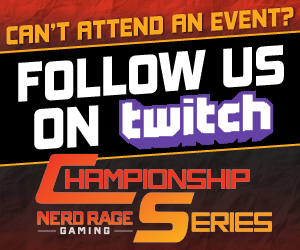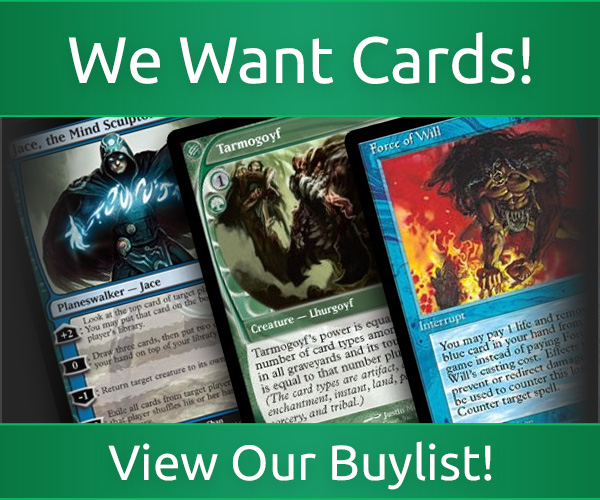Q&A: April 2017 CT+ winner Alex Javed

April 2017 CT+ winner Alexander Javed.
Alex Javed is a fixture on the Chicago tournament scene, and he’s got a well-earned reputation as a player who can be competitive in any format.
But he’s best known for his mastery of Affinity in Modern. He won the April CT+ with a swarm of robots, and that comes on the heels of winning Regionals earlier this year and a Modern CT last year with Affinity as well.
In the first of our new series of Q&As with CT winners, Alex shared some insights on himself and his Modern deck of choice. Before we get started, here’s Alex’s winning list:
Alex Javed, Affinity, 1st place, CT+, April 2017
Casey Laughman (CL): How long have you been playing Magic? What got you into the game in the first place, and what keeps you interested in playing it?
Alexander Javed (AJ): I have been playing magic since Masques Block. I learned to play at summer camp, and the first game I played was an 8-player free-for-all with a 6th edition starter deck. It had Nightmare in it, so I clearly won, and I was hooked. I think I keep playing because I love being competitive and hanging out with friends, and Magic is great.
CL: You’re known as an Affinity expert, and you’ve been on quite a roll with it lately. Why is it your deck of choice in Modern and what makes it well positioned right now? What are the best and worst match-ups, and why?
AJ: I’ve been playing it since it was legal in Standard. I think it’s well-positioned when the best thing to do in the format is be aggressive, and this has always been the best aggressive deck. There are so many decks in Modern that Game 1s are rough, but after board, you can handle them pretty well, so best and worst match-ups are kind of hard to pick.
Playing against the B/G/x decks are always tough with so much removal, and not just creature removal. Grixis and Jeskai are both interesting match ups. It always comes down to skill, the decks have so many answers that it gets tough. I usually fare well against other aggro decks; not sure what would be the best match up for Affinity. They say Merfolk but you can still lose.
CL: There were three Affinity decks in last week’s top 8, and each was slightly different. What are the untouchable cards in the deck, and why are they mandatory inclusions? How do you adjust the flex spots from tournament to tournament?
AJ: The main cards in the deck are definitely Mox Opal, Arcbound Ravager, Cranial Plating and Darksteel Citadel. Most of the deck is pretty untouchable though. Both Nexuses, Signal Pest, Vault Skirge, Springleaf Drum are all just great role players, efficient at what they do. Etched Champion, Thoughtcast and Welding Jar are the main cards I switch in and out depending on what is trending. I don’t change them that often and if I do it’s not by that much. Sometimes I put some Masters of Etherium in if I’m expecting more aggro than midrange and control, but I try to keep it the way I like it. I feel like it gives me the best chance of winning.
CL: Over the last couple years, there have been several artifacts printed that have seen some play in Affinity lists — Hangarback Walker, Walking Ballista, even Hope of Ghirapur. How do you evaluate new cards for possible inclusion, and what is your process for testing cards that seem promising?
AJ: It’s tough. Affinity is made up of some of the best artifacts that have been printed since Mirrodin, so adding new stuff is very hard. The new card has to be better than a card in the deck by a lot or bring something very different to the deck that it doesn’t have already. Walking Ballista and Hangarback Walker are unique in that way but they just cost too much for me, even though they are always ready to go back in. I usually work on a list and jam games, testing at Hotsauce during the week, and then bring it to an event. Luckily, there is usually a Modern event on the weekends around here.
CL: For an aggro deck, Affinity has a number of possible lines to keep track of — Ravager math, when to switch to the Infect plan with Inkmoth Nexus, or even equipping Cranial Plating at instant speed. How do you make sure that you’re keeping the big picture in mind while playing instead of getting locked in on one particular line?
AJ: I have been told I play my Affinity deck more like a control deck than an aggro deck. I think there are a lot of surprise lines in Affinity that make it so sticking to certain lines is harder to do when you have so many ways you can attack your opponent. You can definitely tell when you are playing against someone who has experience with Affinity, when they can switch the angle of attack when the situation calls for it, know when to hold back or commit, and know when to extend and not over extend.
CL: What advice can you offer to someone who’s picking up Affinity for the first time?
AJ: I tell people that Affinity is not a mindless aggro deck, to really be good at the deck it just takes practice and reps. Just play it a lot and you will start to see lines, small little combos everywhere. Always keep a running artifact count in your head while you are playing. Don’t try to understand Arcbound Ravager, it is just too hard.
CL: You qualified for last year’s championship as well. How has your perspective changed on the championship and how you will approach it differently with last year’s experience under your belt?
AJ: Well, I think this year’s will have a bit more of a competitive feel to it with the increased prize payout, but I plan on just getting ready as best I can and improving on my performance from last year.
Alex Javed was a competitor in last year’s inaugural Nerd Rage Gaming Championship, is the winner of April’s Modern CT+, and won Modern Regionals earlier this year with Affinity. Casey Laughman is editor of Nerd Rage Gaming. Email comments or questions to claughman@gmail.com.




